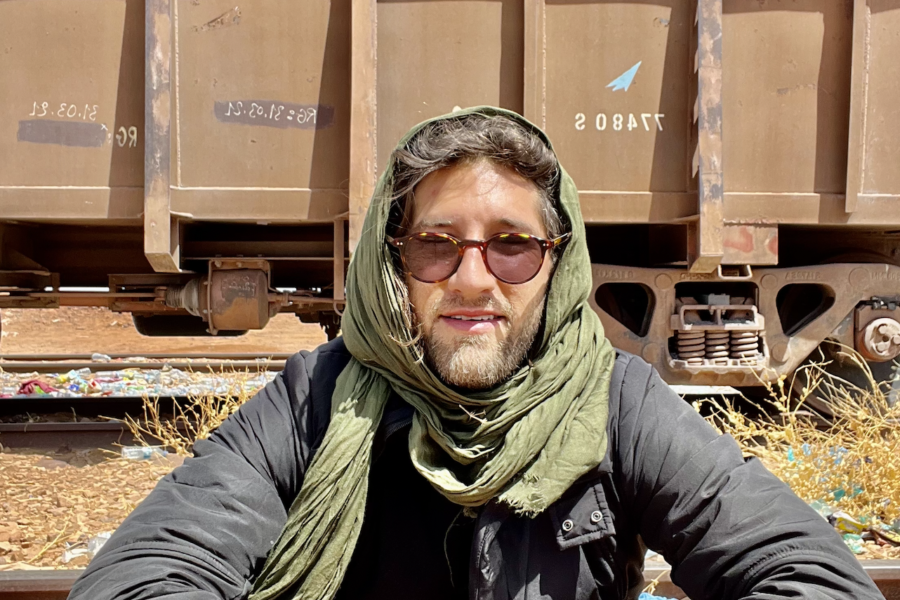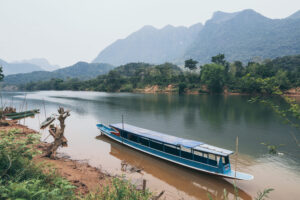I understand why bucket lists have mixed reviews. It’s true that, to some, they can seem like a futile attempt to turn life into a ticking box exercise, removing the spontaneity that makes life so unique and interesting. Some argue that focusing too much on a bucket list may cause us to miss out on the unanticipated joys and experiences that life has to offer.

However, I see a bucket list, especially a traveler’s bucket list, as a manifestation of our dreams and desires. It’s not just about the thrill of crossing off an item; it’s about the process, the adventure, the people you meet along the way, the learning experiences, the trials and tribulations, and ultimately, the personal growth. A bucket list can also function as a compass, pointing us in the direction of the experiences that bring us joy, inspiration, and fulfillment.
On my personal bucket list, you’ll find the likes of skydiving in Northern Australia, living on every continent (excluding Antartica ), and accomplishing strenuous treks to Everest and K2 base camps. I’ve explored, learned, and taught in places like rural Thailand, East Africa, and the world’s renowned wonders from Machu Picchu to Petra to the Taj Majal. With every place I’ve been, every culture I’ve encountered, every challenge I’ve overcome, I’ve grown and gained new perspectives.
However, I still crave more adventures, and my bucket list is never-ending. The wanderlust in me is never fully quenched, and the explorer in me is always ready for the next journey. That’s why I am on this 10 month journey around the world, eager to tick off more experiences from my bucket list.
One of my recent accomplishments is backpacking across West Africa, covering over 1500 miles, all while crossing only land borders from Morocco down to Senegal. I’m actually writing this blog in the capital Senegal, Dakar, right now. Part of this journey involved a stint in Mauritania, one of the least visited countries in the world. It’s a stark, challenging environment with minimal tourism infrastructure and an expansive desert landscape.
But Mauritania holds a unique attraction that isn’t widely known – it’s home to the longest train ride in the world. Picture this: 20 hours aboard a freight train, traversing the vast Sahara, surrounded by mounds of freshly mined iron ore. The lack of comfort and amenities is compensated by the sheer experience of crossing one of the world’s harshest environments in such an unconventional way.
This peculiar adventure offers a kind of raw authenticity that is increasingly hard to find in our world. It’s a chance to experience a slice of life that is utterly different from the norm. This kind of challenge, the type that pushes you out of your comfort zone and forces you to adapt and grow, is exactly what I seek in my travels and what makes each item on my bucket list so worthwhile.
So, here’s my advice to fellow travelers: Grab a pen, your ski goggles, pack a sleeping bag and plenty of water, and get ready for a once-in-a-lifetime experience aboard the longest train in the world, across the Sahara. Trust me, it’s a bucket list adventure you won’t forget.
Brace yourself. This ride isn’t your typical first-class journey with luxurious beds, on-board dining, or room service. In fact, it’s far from it. You will be clinging onto the sides of open iron ore carriages, your skin coated with dust and grime, your hair a windswept mess, your clothes saturated with the scent of iron ore. It’s a rough, dusty, and exhausting ride, but a ride that promises an unparalleled adventure and a truly unique insight into the life of Mauritanians.
Boarding the train is an adventure in itself. There is no formal station or boarding procedure, and you simply find a spot on the iron ore mound and hop onto the carriage. The locals are friendly and are often more than willing to help you navigate this extraordinary journey.
Once onboard, you’ll have the chance to witness the stark beauty of the Sahara like never before. As the train snakes its way across the desert, you’ll be treated to a panoramic view of the shifting sands, punctuated by the occasional glimpse of nomadic tribes and camels. The desert’s solitude, its vast expanse of nothingness, is both humbling and inspiring.
Nightfall in the desert is a spectacle that no words can do justice. As the sun dips below the horizon, painting the sky with hues of orange, red, and purple, you’ll be enveloped in a tranquil silence, broken only by the clanking of the train on its tracks. Then, as the darkness sets in, you’ll witness a celestial extravaganza as the night sky unfurls a tapestry of stars, unmarred by city lights or pollution. One moment, you’re captivated by a scattering of twinkling stars across the night sky.
Then, you look away for a brief second, drawn back by some mundane distraction, and when your gaze returns to the heavens, the spectacle has miraculously amplified. It’s as if the number of stars has proliferated exponentially, transforming the night sky into an endless sea of shimmering celestial bodies. This stunning display of natural beauty is unlike anything I’ve ever witnessed before.
However, the true essence of this journey extends beyond the sublime landscapes and the majestic night skies. It lies in the camaraderie built and shared with fellow travelers along the way, the bonds that are formed in the crucible of this extraordinary experience. Originally, I had set out on this journey as a solo adventurer, intent on absorbing the rawness of this experience in solitude. Yet, an hour before the departure, fate intervened in the form of a wayfarer from Kansas, of all places, turning my solitary voyage into an unexpected shared adventure.

As fate would have it, we ended up sharing the same train car. We exchanged introductions, shared our scanty food and water supplies, and found ourselves immersed in hours-long conversations that spanned a multitude of topics. This unexpected camaraderie created a bond that was as unexpected as it was profound, a bond born in the face of adversity and resilience. It was a testament to the adventurous human spirit that this journey so vividly embodies.
Upon reaching your destination, you disembark with more than just a tick off your bucket list. You leave with a heart brimming with indelible memories, a camera laden with breathtaking captures, and a renewed appreciation for life’s simplest pleasures. Indeed, the ride leaves you physically drained, covered from head to toe in the dust and grime of iron ore – a testament to the ruggedness of the journey. Yet, the exhilaration of having completed such an atypical journey, of having pushed your boundaries and emerged victorious, renders any physical discomfort insignificant.
This journey may not be for everyone – it’s demanding, inconvenient, and at times, brutally challenging. Yet, for those armed with a spirit of adventure, an open mind, and an insatiable thirst for authentic, unfiltered experiences, this trip is an invaluable addition to your bucket list.
So, take that leap, embark on this less-traveled path, and brace yourself to embrace the raw beauty, chaotic allure, and heart-stopping adventure that awaits you on the longest train ride in the world. After all, life’s most magical experiences often lie just outside our comfort zones, waiting for us to break free and explore.
So let’s say you’re up for the challenge. How do you do it? This is a first hand experience so this may be different from other blogs you have read online. But fundamentally, they are all the same.
Firstly, it’s essential to understand the magnitude of the undertaking; an adventure through the harsh but mesmerizing landscape of the Sahara on a 2.5km long iron ore train. Now, I’ve experienced many journeys, but none as extraordinary as this. This venture requires meticulous planning and preparation, but the reward is an unforgettable experience of raw, unfiltered travel and cultural immersion.
I began my journey from the land border of Western Sahara, which is commonly known as Morocco. This particular entry point offers a smooth transition into Mauritania, and I felt a certain thrill in traversing the territory’s shifting sands. From here, I headed directly to Mauritania’s capital, Nouakchott, setting my first footprints in the Mauritanian sands.
Nouakchott was my first stopover, chosen due to the expensive accommodation options in Mauritania. Here, I had arranged a stay through Couchsurfing, a platform that connects travelers with local hosts. This decision proved fruitful in multiple ways, not only economically, but also culturally. Staying with a local family, I was able to understand Mauritanian culture, customs, and the local way of life from a more intimate perspective. This culturally enriching experience was such a pivotal part of my journey that I’ve decided to dedicate an entire blog post to it, so stay tuned for that!
The journey from the border to Nouakchott was a 6-hour ride, organized by a reliable transport company named Supratours. They are a well-known name among travellers visiting Morocco due to their extensive network, offering dependable service and timely operations. I had used their services in Morocco, so it was a familiar and trusted choice.
Once in Nouakchott, I faced the task of preparing for the actual iron ore journey. Fortunately, my gracious host, Ha Roune, was there to guide me. With his assistance, I navigated the bustling local market, securing essentials for my trip. A simple yet sturdy set of clothes, a backpack to carry my belongings, and most importantly, ski goggles. Yes, you read that right! Ski goggles. Trust me, when you’re on a train hauling a mountain of iron ore, you’ll thank your stars for this protective gear, unless you fancy having your eyes full of iron ore dust.
After procuring the necessary supplies, Ha Roune helped me arrange for my onward transport. We organized a van to take me directly to Zouerat, the mining town and starting point for my train journey. The fare was a reasonable 900 Mauritanian ouguiyas ($26 usd), and the journey took about 10 hours, surprisingly punctual, considering the remote location. We set off around 8 am and arrived just as the sun was setting, casting an ethereal golden glow over the desert town.
However, there are alternate routes to reach Zouerat. Some travellers might prefer to take a van from Nouakchott to Atar, then arrange transport from Atar to either Zouerat or Choum, both of which are departure points for the train. However, this route requires careful planning as the iron ore train doesn’t operate on a fixed schedule. This may mean spending a night in Atar or Choum to match the train’s timetable.
In Zouerat, I would advise against trying to board the train immediately upon arrival. The impending journey is long and gruelling, and it’s crucial to rest and gather necessary supplies, such as water and food. Ensure you include these considerations in your planning and preparation phase for this unique adventure.
Zouerat, a mining town deeply nested within the Sahara, exudes a peculiar vibe. During my time there, I didn’t encounter another foreigner until I met Sterling, the wild man from Kansas, on the eve of our train journey. Known for its iron ore mines, Zouerat’s lifeline is the iconic iron ore train. This colossal vehicle serves as the town’s main link to the outside world, steadily transporting minerals across the vast desert expanse.
A word of caution – be prepared for a minor shock when you explore accommodation options in Zouerat. Given that many companies house their employees in the town for extended periods, hotels are allowed to charge a hefty premium. During my stay, I met an Algerian man temporarily working in the mines; his company had dispatched him to Zouerat for a month. The locals found it strange that a tourist would want to ride the iron ore train – it’s not your usual, conventional tourist activity after all.
I found a room at Hotel Lyezid, which despite being priced at $83 per night – a figure beyond my usual travel budget – was comfortable and well-maintained. The hotel offered clean rooms, a friendly proprietor, and most importantly, a free breakfast. After failed attempts to check into Hotel Mamma and Hotel Tigris due to power outages and locked doors, I was relieved to find a welcoming place at Hotel Lyezid. The comfort and amenities, including a much-needed shower before the dust-laden journey, justified the cost.
As for activities within Zouerat, the town offers little beyond its unique locale and people-watching opportunities. My advice would be to eat well, hydrate thoroughly, ensure all your devices are charged, and brace yourself for an unusual, yet unforgettable experience.
Following a good night’s rest, you wake up the next morning, ready for the adventure that awaits. The train schedule is rather fluid, with departure times ranging anywhere from 3 pm to 8 pm from Fredrik Station. On my journey, the train departed at 6 pm.
Getting on the train involves a simple taxi ride to Fredrik Station and a bit of patience as you wait for the iron ore train to pull up and attach additional cars. You’re given roughly 20 minutes to scramble aboard and find a suitable car. I would suggest choosing a car with a high pile of iron ore, offering a panoramic view of the train’s length. Additionally, try to find a car situated in the middle of the stack for a two-sided view.

Once settled, you embark on an unparalleled journey across the Sahara, traversing more than 600 kilometers over a period of 20 hours, all the way back to Nouadhibou. With no tickets, no check-in personnel, it’s just you and the iron behemoth rumbling through the desert under a sky full of stars. There are, of course, a few locals you might meet at the station who would be aware of your journey. Alternatively, you can disembark at Choum (about 7-8 hours into the journey) and arrange transportation back to Nouadhibou or Nouakchott the following day.
Embarking on this extraordinary journey aboard the world’s longest train across the Sahara isn’t merely about ticking off an item on your bucket list. It’s about embracing an authentic, life-changing adventure that pushes you beyond your comfort zone and immerses you in the raw beauty of the desert landscape. It’s about forming unexpected friendships, overcoming adversities, and emerging with a deeper understanding of the world around you. So, to the brave souls out there seeking their next adventure, I urge you to consider this awe-inspiring journey. It’s a trip you won’t forget – a testament to the endless possibilities that lie beyond the boundaries of our comfort zones.
Overview:

Travel Options:
- Zouerat to Nouadhibou
- Duration: 18-22 hours
- Details: This is the full-length journey, offering the most comprehensive experience of the Mauritanian landscape. Be prepared for a long ride, traversing the vast Saharan expanse under the starlit sky.
- Zouerat to Choum
- Duration: 7-8 hours
- Details: A slightly shorter option, this journey will still provide an authentic experience of the Sahara and a taste of the local culture, particularly in the small town of Choum.
- Choum to Nouadhibou
- Duration: 10-12 hours
- Details: This route allows you to experience the changing landscapes as the train moves from the Saharan interiors to the coastal city of Nouadhibou.
My Journey Plan
- Van from Nouakchott to Zouerat
- Details: I started my journey from the capital city, Nouakchott. I took a van to Zouerat, a journey filled with glimpses of the local life and landscape.
- Overnight in Zouerat
- Details: I spent the night in Zouerat, resting and preparing for the long train journey ahead. The small mining town offered a unique insight into life in the heart of Mauritania.
- Board the Train at Fderik Station
- Timing: Around 6 pm
- Details: The next evening, I made my way to Fderik station to board the iron ore train. With no official boarding process, the experience was as authentic and chaotic as I had imagined.
- Journey to Nouadhibou
- Details: As the train embarked on its journey across the Sahara, I braced myself for an experience of a lifetime. From the stunning sunset to the breathtaking starry sky, the journey was nothing short of extraordinary.
- Arrival at Nouadhibou
- Details: After about 20 hours, I disembarked in Nouadhibou, a coastal city on the west coast of Mauritania. Although weary and covered in iron ore dust, the thrill of completing such a unique journey was energizing and refreshing!
Total Duration: Approximately 20 hours.
Essential Tips
- Ski Goggles: Protect your eyes from dust and wind, especially when the train picks up speed or during sandstorms.
- Sleeping Bag: Temperatures can drop significantly in the desert at night. A good sleeping bag is essential to keep warm and get some sleep on the iron ore.
- Water Supply: Carry more water than you think you’ll need. The arid desert environment can be dehydrating.
- Camera: Make sure your camera is fully charged. You wouldn’t want to miss capturing the breathtaking landscapes and star-studded night skies.
- Food: Pack some non-perishable food items for the long journey. Remember, there won’t be any stops for food along the way.
- Gloves: A sturdy pair of gloves can protect your hands when climbing onto the iron ore carts and from the cold desert nights.
- Scarf: Protect your hair and face from the dust and sand. Consider a light, breathable fabric that can be used to cover your nose and mouth during sandstorms.
- Passport Copies: While traveling in Mauritania, you’ll encounter numerous police checkpoints where your passport will inevitably be requested. To expedite the process, consider photocopying at least ten pages of your passport’s bio page. This way, you can simply provide them with a copy when passing through checkpoints.



















